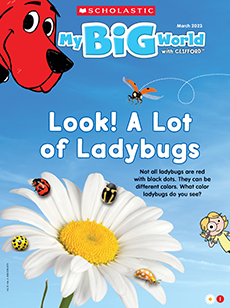What Might You See at Night? Lesson Plan
What We Are Learning
Science Focus:
night sky
Theme Vocabulary Words:
night, might, bright, light, flight, sight, tight, streetlights
Skills We’re Practicing:
group discussion, rhyming words, critical thinking, vocabulary, counting
- In How to Catch a Star by Oliver Jeffers, a boy dreams of one day catching a star and making it his friend. He tries everything he can think of to try to catch it but is unsuccessful. Then one day, he realizes that with a bit of patience—and a little luck—his dream can come true!
Watercolor Night Sky
Materials: white cardstock, white crayons, paintbrushes, black watercolor paint
- Watch as a night sky appears before your very eyes with this easy activity!
- Give each student a sheet of white cardstock and a white crayon. Guide children as they use the crayon to draw the moon and stars on the cardstock. Because the cardstock and crayons are white, children’s drawings may be a little difficult to see. Talk about it.
- Next, have children use a paintbrush to paint over their entire paper with black watercolor. Their moon and stars will appear! Discuss what happens.
- Ask children to talk about their night sky. What do they see? art/science

Materials: clear plastic bottles with tops, water, glitter, food coloring, clear dish soap, superglue, masking tape, small night-themed decorative items (e.g., star, crescent, and circle confetti) (optional)
- This activity lets children “bottle” the night sky! Bonus: The bottles can be used as nighttime calm-down objects.
- Rinse and dry plastic bottles. Give each child one to use. Help children to fill the bottles 3/4 of the way with warm water. Add glitter and dark food coloring or liquid watercolor—blue or purple works best. If you’d like, add night-themed decorative items. Fill the rest of the bottle with dish soap so there’s no air at the top. Superglue the top on and secure it with tape. Have children shake the bottles and watch the glitter swirl around!
- Send the bottles home with children so they can use them as part of their bedtime routines. fine-motor skills
